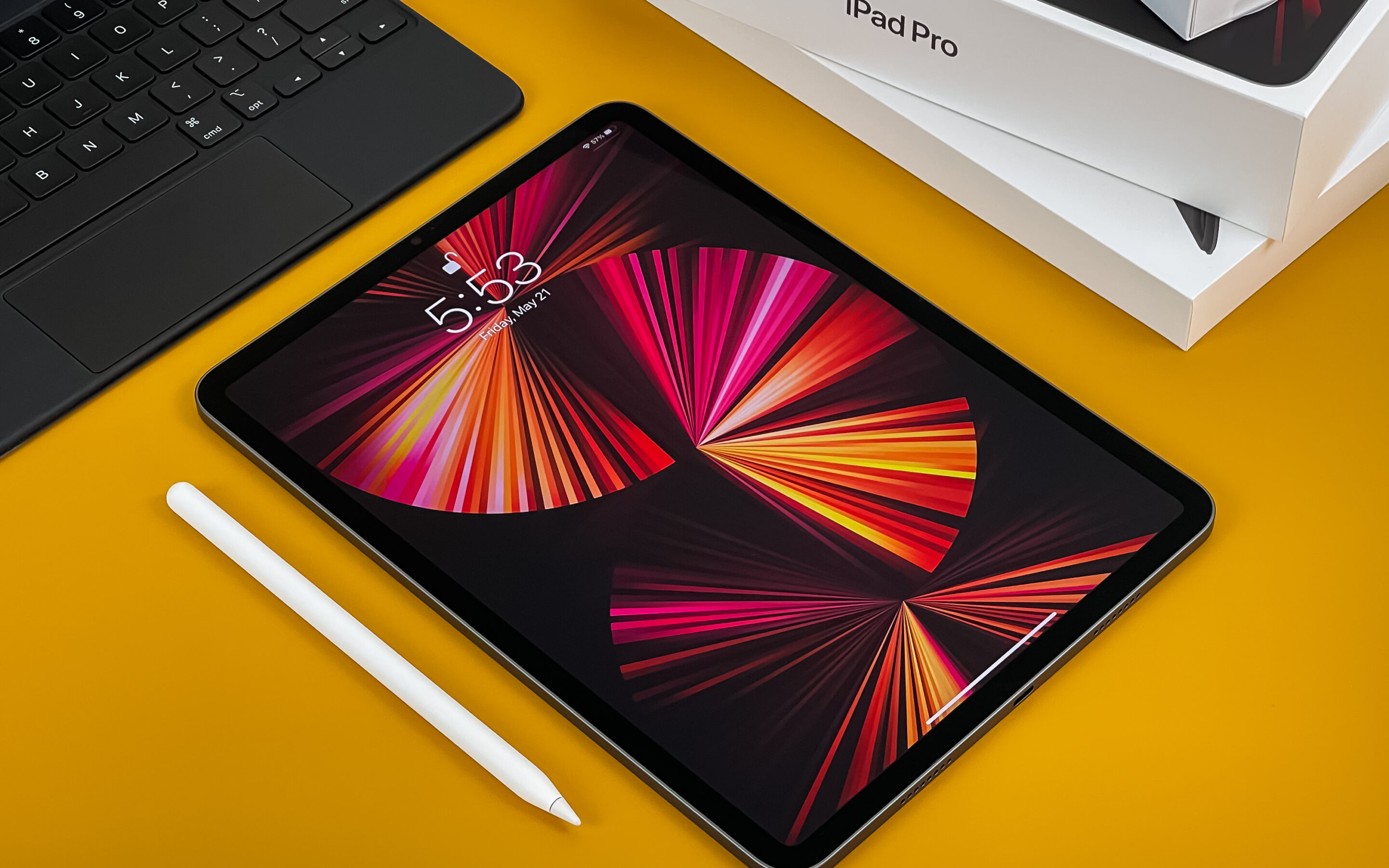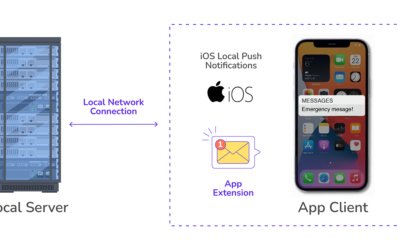Table of Content
iPad app development has become essential in the mobile category for creating versatile and powerful applications.
iPad apps are key in today’s business environments due to their unique ability to bridge the gap between mobile and desktop experiences. They offer unparalleled versatility and functionality, making them indispensable for personal and professional use. As the leader in the industry, Apple iPads set the standard, catering to the evolving needs of today’s users.
This document provides stakeholders with a comprehensive overview of iPad app development, highlighting features and performance needed for mobile apps, including business and productivity apps, graphics and creativity apps, media apps, games, and more. Leveraging Apple Intelligence, App Intents, and frameworks like UIKit and SwiftUI helps align development with iPadOS capabilities, resulting in intuitive, powerful, and high-performing applications.
Maximizing iPadOS Apps
Versatile Productivity Tool
iPads feature larger displays than mobile phones, making them ideal for multitasking and various activities. Precision tools like the Apple Pencil, Magic Keyboard, and trackpad empower users to perform creative and professional tasks easily. Optimized for touch, gesture, and stylus interactions, iPads provide intuitive and immersive user experiences that adapt seamlessly to various scenarios.
Essential for Remote Work and Collaboration
The iPad’s portability and integration into cloud-based tools make remote work and collaboration indispensable. Apps for virtual meetings, document editing, and collaborative platforms are enhanced by the iPad’s powerful hardware and software capabilities, ensuring productivity on the go.
Seamless Integration Across the Apple Ecosystem
The iPad works effortlessly with other Apple devices, enabling workflows like Handoff, Universal Control, and AirDrop. Features like App Intents, Siri, and Shortcuts extend app functionality across devices, enhancing user engagement and productivity.
Advanced Hardware and Developer Support
Equipped with cutting-edge hardware—including M-series chips, high-refresh-rate displays, and sophisticated cameras—iPads enable powerful apps for augmented reality, video editing, and gaming. Robust APIs such as Core ML, RealityKit, and Metal provide developers with the tools to create high-performance applications for various use cases, from machine learning to AR.
Redefining iPad Apps
iPadOS introduces powerful features that enhance business productivity, user engagement, and revenue potential.
iPad apps are not confined to standalone functionality. They interact seamlessly with system-wide features like Siri, Spotlight, and Widgets. Features like Live Activities enable apps to engage users beyond the app, delivering real-time updates on the Lock Screen or Home Screen.
Apple Intelligence is a new advanced capability powered by on-device AI and large language models (LLMs) integrated into iOS, iPadOS, and macOS. These capabilities redefine how apps interact with users by offering smarter, more personalized, and context-aware experiences while maintaining a strong emphasis on privacy.
Apple Intelligence supports new App Intent domains and APIs, enabling developers to design tasks that Siri can execute across apps with rich contextual understanding.
With on-screen awareness, Apple Intelligence enables apps to understand the context of what users are viewing or doing and take appropriate actions. For instance, Siri can interpret the content on-screen and suggest relevant actions or shortcuts to enhance usability.
All AI processing occurs on-device, ensuring user data remains private and secure. This aligns with Apple’s commitment to protecting user privacy while delivering highly personalized interactions.
iPadOS apps also benefit from integrated AI tools like Writing Tools, which allow users to rewrite, proofread, or summarize text efficiently. Features like Genmoji bring a playful, creative touch to user experiences, while semantic search improves usability by understanding the context and relationships between terms, making it easier for users to find relevant content.
Together, these capabilities showcase how AI integration can elevate productivity, creativity, and user satisfaction.
iPad App Development Overview
iPadOS developers specialize in designing features tailored specifically for iPad apps. The initial planning phase is crucial for identifying the app’s primary use cases, audience, and workflows. Decisions made during this stage influence UI/UX design, ensuring the app aligns with iPad-specific interactions such as multitasking, Split View, and Apple Pencil support.
At Krasamo, developers take a strategic approach to minimizing technical debt by addressing key decisions early in development. They focus on optimizing for hardware and features, determining how the app will leverage capabilities like large screens, high-performance chips, and advanced peripherals from the outset. This proactive planning avoids costly retrofitting of functionality later.
Selecting the right Apple APIs—such as App Intents, Core ML, or RealityKit—is essential for seamless integration with system-wide features like Siri, Shortcuts, and AR experiences. By incorporating these APIs, developers can ensure the app delivers advanced functionality while maintaining compatibility with the Apple ecosystem.
Designing iPad Apps
Developers and designers must ensure their apps align with Apple’s iPadOS standards to deliver polished, user-centric applications that fully leverage the platform’s unique capabilities. This section highlights key aspects to address when discussing iPad app development projects with their teams.
Krasamo is an iPad app development company that designs apps specifically optimized for the iPadOS platform, focusing on the iPad’s unique features to create user experiences that are intuitive, powerful, and aligned with Apple’s Human Interface Guidelines (HIG).
iPadOS supports both UIKit and SwiftUI as core frameworks for app development. While UIKit remains the go-to framework for complex and highly customizable UIs, SwiftUI offers a declarative syntax ideal for rapid development and code maintainability. Developers can combine the strengths of both frameworks to deliver visually compelling and efficient applications that take full advantage of iPadOS features.
Adaptive Layouts for Larger Screens
Designing user interfaces for iPads requires adaptive layouts that take full advantage of the larger screen. Layouts should effectively utilize space by incorporating sidebars, split views, and modal sheets to organize content intuitively and ensure a clear hierarchy.
Other considerations include respecting iPadOS safe areas to prevent content overlap with system elements like the camera, Home Indicator, or edges. Developers can use tools like Auto Layout or SwiftUI to dynamically adjust UI elements based on screen size and orientation, ensuring consistent and visually appealing designs.
Support for Multiple Orientations
iPads are frequently rotated, so apps must function seamlessly in portrait and landscape orientations. Responsive design principles should be applied to rearrange content dynamically. For instance, a split-screen layout in landscape mode can stack vertically in portrait mode to maintain usability and aesthetics.
Split-Screen and Multitasking
iPadOS supports powerful multitasking features like Split View, Slide Over, and Stage Manager, enabling users to work with multiple apps simultaneously. Apps should adapt their layouts to different multitasking modes, such as screen splits in Split View, and remain functional in Slide Over. They should also be resize-aware, ensuring that content adjusts seamlessly when users resize windows in Stage Manager. Supporting these features ensures smooth user workflow integration and enhances usability in multitasking scenarios.
Maximizing Productivity
To maximize iPadOS’s multitasking capabilities, apps should incorporate features that enhance productivity. Drag and Drop functionality allows users to move content—such as text, images, or files—between apps effortlessly, streamlining workflows. Similarly, keyboard shortcuts cater to power users who connect external keyboards, providing quicker access to tasks and navigation.
Touch and Interaction Design
Designers must prioritize using Apple’s system-standard gestures, such as swipes, pinches, and drags, to maintain consistency with user expectations. When introducing custom gestures, it’s essential to ensure they are intuitive and supported by clear visual or haptic feedback to guide users effectively.
Apple Pencil Integration
iPad apps should integrate the Apple Pencil to support precise actions like writing, drawing, and markup. Developers should also implement the Double-Tap gesture for context-sensitive actions, such as switching tools or toggling features. To ensure a seamless experience, interactions involving the Apple Pencil—like scrolling or drawing—must be optimized for minimal latency and smooth performance.
Enhanced Visuals
iPadOS app designers must focus on creating visually engaging and accessible experiences that take full advantage of the iPad’s high-resolution display and larger screen size. Apps should use scalable, high-quality assets optimized for Retina displays to ensure crisp visuals on any device. Supporting Dynamic Colors for Light and Dark Modes enhances visual comfort and aligns with user preferences. Additionally, leveraging the larger screen to establish a clear visual hierarchy and incorporating ample spacing improves readability and usability.
Typography plays a critical role in enhanced visuals. System fonts like San Francisco ensure clarity and legibility across various screen sizes. To create engaging experiences, developers should incorporate smooth animations that guide users through interactions or provide feedback. Custom UI elements, such as branded visuals or app-specific designs, can be added to help differentiate the app.
Accessibility
Designing apps for iPadOS requires a strong emphasis on accessibility to ensure inclusivity for all users. Apple’s built-in accessibility features, such as VoiceOver, enable text-to-speech navigation, making apps usable for visually impaired individuals. Supporting Dynamic Type allows users to scale text sizes according to their preferences, enhancing readability and usability. Additionally, incorporating High Contrast modes and reducing motion effects accommodates users with visual impairments or motion sensitivity.
Inclusive interaction goes beyond basic accessibility features. To cater to diverse user needs, apps should ensure compatibility with various input methods, including touch, trackpads, keyboards, and assistive technologies. Adding descriptive labels to interactive elements provides better support for screen readers, making navigation more intuitive.
iPadOS Apps and the Apple Ecosystem
The Apple Ecosystem has revolutionized app development by providing a unified and robust platform. With tools like Xcode and Swift, developers can build apps for iOS, iPadOS, macOS, watchOS, and tvOS with shared codebases, minimizing redundancy and ensuring a consistent experience across devices. Features like Handoff and Universal Control enable seamless workflows, such as starting a task on an iPad and continuing it on a Mac. AirDrop and iCloud simplify data sharing and synchronization, giving users seamless access to their files and app states across devices.
Ecosystem Integration
iPadOS apps can take full advantage of Apple’s ecosystem features to enhance functionality and user engagement.
- Handoff: Allow users to continue tasks effortlessly between iPads, iPhones, and Macs.
- Universal Control: Enable workflows that leverage shared input devices like keyboards and trackpads across iPads and Macs.
- AirDrop: Facilitate easy file sharing between Apple devices.
- Widgets: Provide glanceable, interactive content on the Home Screen that links to deeper app functionality.
- App Intents: Extend app actions into Siri, Shortcuts, and Spotlight for greater convenience and integration into the Apple ecosystem.
iPad Apps–APIs and Frameworks
Core ML
Apple’s Core ML framework brings powerful machine learning capabilities directly to iPad apps, enabling on-device AI that is both fast and privacy-focused. Developers can integrate machine learning models to perform tasks such as:
- Image Recognition: Identifying objects, people, or environments in photos and videos.
- Natural Language Processing (NLP): Enabling advanced features like text classification, language translation, and sentiment analysis within apps.
- Personalized Experiences: Core ML supports personalization by tailoring recommendations or app behavior based on user data processed securely on the device.
RealityKit and ARKit.
The RealityKit and ARKit frameworks provide the foundation for building immersive augmented reality (AR) experiences. These APIs empower developers to create visually rich, interactive applications that merge the digital and physical worlds. Key use cases include:
- Virtual Product Previews: Allow users to view 3D models of products in their real-world environment using their iPad camera.
- Interactive AR Games: Develop gaming experiences that blend real-world spaces with virtual elements, creating dynamic and engaging gameplay.
- Training and Simulation: Use AR for educational apps or professional training tools, offering lifelike simulations for enhanced learning.
Transferable and FileEntity APIs
The Transferable and FileEntity APIs enable seamless sharing of content generated within apps, enhancing cross-platform functionality and user convenience. These APIs support:
- Content Exporting: Allow users to share app outputs, such as PDFs, images, or text files, with other apps or devices effortlessly.
- File Integration: Apps can securely access and manage user-created files, making working on shared projects or files easier across multiple devices.
For example, a design app can let users export their work as high-resolution images or share files directly with collaborators through AirDrop or other methods. These APIs streamline workflows, promote collaboration, and enhance the app’s usability in professional and creative contexts.
App Intents: Extending Functionality Beyond the App
App Intents is a framework provided by Apple that allows developers to expose specific app functionality to system-level features like Siri, Spotlight, and Shortcuts. By leveraging App Intents, apps can perform tasks and provide content without requiring users to open the app directly, creating more seamless and integrated user experiences.
1. What Are App Intents?
App Intents are actions or tasks defined by developers that can be accessed and executed through various Apple ecosystem features. They serve as a bridge between the app and system-wide tools, enabling:
- Voice Commands: Users can trigger app actions using Siri.
- Search Integration: App functionality can appear as actionable results in Spotlight searches.
- Automation: Users can combine App Intents into workflows in the Shortcuts app, enabling automations tailored to their needs.
2. Designing App Intents
Developers must design App Intents to be intuitive, flexible, and aligned with the app’s functionality considering the following principles:
- Dynamic and Static Parameters:
- Use dynamic parameters for inputs that change frequently (e.g., selecting a file or folder from the app).
- Use static parameters for predefined options (e.g., selecting a specific mode or setting).
- Optional Inputs: Design inputs that can be skipped if not immediately relevant, enabling the intent to run with minimal configuration.
- Toggles: Include toggles for binary states (e.g., on/off) to simplify user interactions and avoid repetitive prompts.
3. Examples of App Intents
- Workflow Automation: A photo-editing app might offer an intent to apply a specific filter, which users can automate through Shortcuts to apply across multiple images with a single command.
- Voice-Triggered Actions: A note-taking app could provide an intent for creating a new note, allowing users to initiate the action through Siri by saying, “Create a note in [App Name].”
By integrating App Intents, apps become part of the broader Apple ecosystem, enabling users to access functionality in contextually relevant and convenient ways.
How Apple Simplifies Development
Apple provides a robust suite of development tools that simplify the process of creating high-quality, feature-rich apps. These tools streamline app creation, testing, and deployment, enabling developers to focus on innovation while maintaining efficiency.
Development Tools
Apple’s modern programming language, Swift, and its integrated development environment, Xcode, are central to the development process. Swift is designed for speed, safety, and readability, making it easier for developers to write and maintain code. Xcode, on the other hand, provides an all-in-one environment for designing interfaces, writing code, and debugging applications. Together, Swift and Xcode empower developers to build efficient apps for iOS, iPadOS, macOS, watchOS, and tvOS with shared codebases, reducing redundancy and ensuring consistency.
Testing and Debugging
Apple simplifies testing and debugging with tools like the Simulator and TestFlight:
- Simulator: Allows developers to test app behavior across multiple devices, screen sizes, and orientations without requiring physical hardware.
- TestFlight: Facilitates beta testing by enabling developers to distribute pre-release versions of their app to testers. This feedback loop ensures bugs are identified and resolved before the app reaches end users.
iPad App Development Company
Partner with an expert iPad app development company to turn your ideas into reality. At Krasamo, we craft innovative, high-performing iPad apps that fully leverage iPadOS capabilities. From designing intuitive user interfaces to integrating advanced features, we deliver customized solutions tailored to your business goals.
Let us help you build apps that drive productivity, creativity, and engagement in today’s digital landscape. Contact us today to get started!












